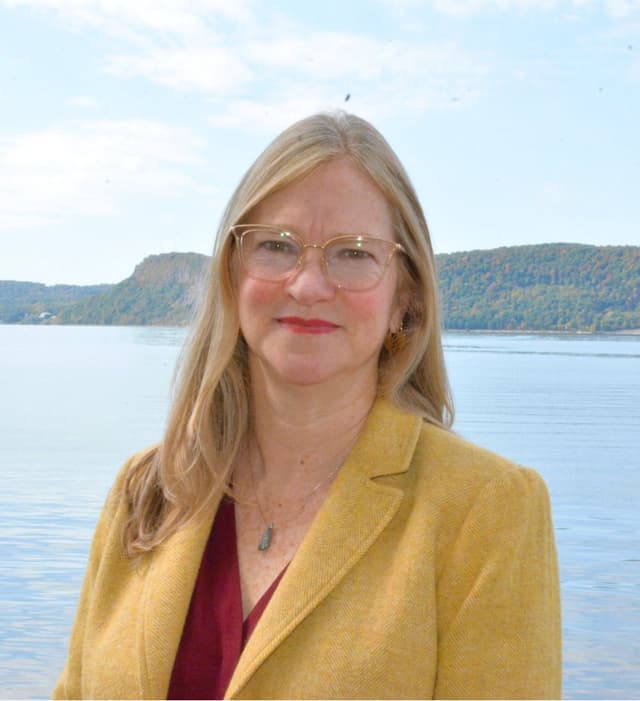Fighting for our free-flowing sister river in Nepal
Right now there is a free and wild river, with cold turquoise waters full of life flowing from the Himalayan plateau through western Nepal on her way to the River Ganges in India. Her Nepalese name is Karnali and she is the sister river of our beautiful Hudson. The two rivers share many characteristics, including being home to majestic endangered fish species (Atlantic Sturgeon and Golden Mahseer) and being the central feature of the communities who live on their banks.
Riverkeeper is the model and inspiration for a global network of over 300 waterkeepers who work protecting waterways on every continent on our planet. Every other year these water protectors gather in person at the Waterkeeper Alliance’s member conference to share knowledge and experience and to support each other in our shared mission of clean and healthy waters for all.
Video loading...The Karnali River is one of the longest undammed rivers on Earth. In a world where almost two-thirds of the planet's longest rivers are no longer free-flowing, the Karnali stands as a symbol of natural resilience. Today, the threat of three planned hydropower dams looms over this pristine river. The proposed dams, in addition to displacing Indigenous communities and impeding fish migration, would alter the course of the river, and deplete surrounding vegetation crucial for minimizing impacts from increased heavy rains and mudslides.
Research shows that new hydroelectric dams are responsible for substantial methane emissions, contributing significantly to greenhouse gas emissions. A 2016 study revealed that the world's hydroelectric dams were responsible for methane emissions equivalent to the entire output of Canada. Methane constitutes 80% of emissions from water storage reservoirs created by dams. Riverkeeper opposes the construction of new hydro dams and we are working on the removal of the abandoned dams in our watershed, the legacy of power generation for mills. In the Hudson River Estuary between New York City and Albany, there are approximately 1,600 dams, most of which serve no purpose but all of which obstruct fish migration and harm river ecology.
In November 2023, I was able to take a vacation trip to Nepal with my husband Josh, to visit the Karnali River and lend support to the efforts of my fellow Waterkeepers to keep her free flowing. Originally scheduled to coincide with The Great Karnali Quest, an ambitious 154-mile rafting race, our trip took an unexpected turn when an earthquake struck the region on November 3rd, just a few days before our departure. The race was postponed, but the essence of the journey remained—to shed light on the Karnali River's significance as a High Conservation Value River and lend the voice of the Hudson River to the local voices seeking to halt the planned dams.
What we experienced was a very different culture with very similar stressors on the natural environment. Megh Ale and Mausam Khanal were gracious hosts who introduced us to three important Nepalese rivers: the Bagmati, the Babai, and the Karnali. The most urban river, the Bagmati, is located in Katmandu where the drinking sources are no longer potable. As a result the volume of single use plastics is profound and the combination of plastic waste and sewage pollution is choking this river and posing public health risks to the residents whose interaction with the river is a sacred component of their religious practices. The Bagmati is the beneficiary of a debris cleanup project fueled by local residents, similar to our Riverkeeper Sweep, but this cleanup happens every Saturday year round!
The Babai River is in the lowlands region of western Nepal, including a stretch that runs through the Bardiya National Park. We enjoyed a beautiful three day rafting trip on this river. Our trip ended at the site of a hydro dam which forced us out of the river. Climbing onto the bridge at the top of that dam, we could see the well-fed crocodiles sunning themselves on the riverbank at the downstream side where fish seeking their ancestral spawning grounds are trapped at the base of the dam, swimming in circles and providing easy prey.
The highlight of our vacation was our time on the Karnali. Our trip across the mountainous landscape heading west toward the river was interspersed with numerous meetings with elected officials arranged by Megh. In those meetings Megh made the case for the value of the Karnali as wild and free flowing for both wildlife and local communities. The power that would be generated by the dams would be for export to foreign markets, whereas the jobs created by ecotourism would be good local jobs that would support and enhance the local way of life. I shared our experience of wanton pollution and exploitation of the Hudson River in the service of economic development and the decades-long effort and massive investments we have had to make to bring her back to a semblance of health. I told them we have still not returned the Hudson to her natural state of health and abundance despite a deep commitment to that goal.
Experiencing our wild sister river was a powerful reminder of what we have lost, and a vision of what could possibly be. Standing with our fellow water protectors to amplify our voices on behalf of the rights of nature was fuel to continue our work for the Hudson and our precious bioregion.
***
Riverkeeper protects and restores the Hudson River, and safeguards drinking water supplies through community partnerships, science, and law. Our core programs improve water quality, restore habitat for an abundance of life, and address the impact of climate change on our waterways. Founded in 1966 as the Hudson River Fishermen’s Association, Riverkeeper became the model for more than 320 Waterkeeper organizations around the world and helped establish globally-recognized standards for waterway and watershed protection. We continue to work toward the goal of a swimmable, fishable, and drinkable Hudson River for all. Learn more, get updates, and support our work by visitinghttps://www.riverkeeper.org. 





